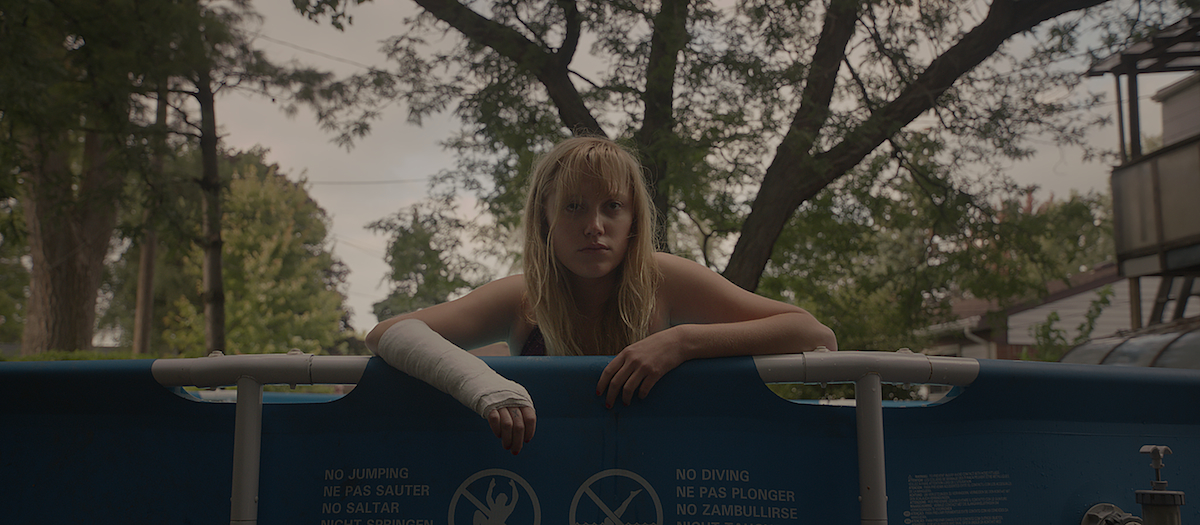It Follows is not an atmospheric film. It Follows is barely even a film. It’s an atmosphere. Whilst the concept for the story is a smart little metaphor, this is secondary to everything you sense and experience. The film carves out an atmosphere through the relationship of its score, style of editing, and arrangement of things in each frame (or – if you want to be fancy pants about it – mis-en-scène).
So as mentioned above, the premise is a smart and simple one. So simply in fact that, if someone pitched it to you, your first reaction might be that it sounds like a uni student’s final year short. But writer/ director David Robert Mitchell is able to flesh this out into a feature because he appears to be equally concerned with creating a feeling as telling a punchy horror story.
But let’s take a moment on that story, because it’s clear that It Follows can be read as an allegory for sexually transmitted diseases. Although really it’s not an allegory or metaphor, but more of a ‘What if there was this crazy STD that etc., etc.’. But Mitchell allows the audience to read the film this if way if they wish, whilst keeping his horror genre credentials in check. The film isn’t using the genre as a vehicle for social commentary – horror’s very much the thing – but the film is layered in a fun and unpretentious kind of way, much like an onion. A fun, unpretentious, scary onion.
Back to the film’s primary concern: atmosphere. Well, like most good horror films, the score is central to its success. It’s all over the place, in a good way: sometimes terrifying, sometimes creating an offbeat, black comedic tone, sometimes getting out the way completely. There’s also a reverberating quality that you’ll recognise from other modern horror films, but here it’s built on and used in what feels like an exciting and original way. Most powerfully, the score is at times completely incongruous to what we see on the screen – a non sequitur. At its best it can blur the line between comedy and horror and establish a disjointed, unpredictable tone (again, in a good way) where you’re not sure what’s round the corner. Comedy? Horror? An unsettling yet satisfying combination of the two?
So now we move on to the composition of images in each frame or – if you’re trying to make the most of a film degree – the mis-en-scène. If you watch this film properly (and yes there is a way to do that, just search ‘David Lynch Iphone’ in Youtube) you’ll be captivated by every object in every short, and scanning each corner of each frame. Do yourself a favour; try and get to a cinema and watch this film surrounded by the viewing public – honestly, you’re not all bad. Firstly, that atmosphere we talked about will be cranked right up. Secondly, all that stuff in the background will be blown up to the power of ten, and you’ll be enveloped be enveloped by each frame’s composition. Thirdly, that journey back home from the cinema will consist of several exhilarating glances over your shoulder, coupled with the adoption of the mantra: It was only a movie. Forget Michal Bay’s endless mechanical explosive farts; films like this are what cinemas were made for. That and overpriced refreshments.
A final word on It Follows, and its editing and performances. I’ve grouped these together because they create the characteristic that gives the film its own identity, as a mumblecore horror piece (or mumblegore, as some have gone for). Both the editing and performances have this deceptively lazy and untroubled quality to them, which really helps build the frustration and suspense of the story. In many ways It Follows is sort of ‘mumblecore meets Drag Me to Hell’ – and the film delivers an end product that is every bit as wonderful as you’d hope those things combined would be.

